“Father, tell us a story.”
The Hopeful, released on April 17, 2024, opens with widower John Nevins Andrews sailing on a ship with his two children, Charles and Mary. They’re the first missionaries sent out by the Seventh-day Adventist Church, en route to Switzerland.
To help his children fall asleep, Andrews tells a bedtime story of the early beginnings of the Advent Movement.
This story features people who hope for the Second Coming of Christ, grapple with complex Bible prophecies, deal with resistance and disappointments, and gain spiritual strength and insight through the truths they discovered in the Word of God.
Wondering how this film compares to the actual historical accounts?
Here’s a peek into the rest of the story, covering how the Adventist Church progressed from its humble beginnings into the worldwide Christian Protestant denomination is it now.
- What real events inspired The Hopeful?
- The Millerite Movement
- Who was William Miller? Did he almost die in battle?
- What prophecy in Daniel was Miller studying? Why did he believe it predicted the time of Jesus’ Second Coming?
- When did Miller begin sharing his findings in the Bible?
- Did some Christian churches condemn Miller’s teachings?
- Did Miller really believe Jesus would return on October 22, 1844?
- The Great Disappointment
- James and Ellen White
- What was Ellen White’s vision all about?
- What were Ellen White’s health struggles?
- Did Ellen’s sister turn against her?
- How did Ellen and James meet?
- How many children did the Whites have? How did two of them die?
- Did Ellen White really prophesy the Civil War?
- What was James White sick with? What happened to him after his stroke?
- The beginning of Seventh-day Adventism
- The rest of the story: Adventism then and now
- A growing movement with an unchanging desire
What real events inspired The Hopeful?
The Hopeful was inspired by:
- The Millerite Movement in the 1830s and 1840s
- The early history of the Seventh-day Adventist Church
What followed, though, was a deep disappointment. The date on which Miller’s followers eventually agreed Jesus would return—October 22, 1844—comes and goes.
Despite this enormous letdown, a handful of Millerites like James and Ellen G. White, Joseph Bates, and others continued to study the Bible to see where they might’ve gone wrong. They used this troubling time to keep learning more and more.
As this group continued their studies, Ellen White (Harmon at the time) received visions from God that encouraged the Millerite believers that God was leading them and had a plan for them. Eventually, they discovered even more truths in the Bible. They gradually grew into a Sabbath-keeping Adventist movement, which later organized into the Seventh-day Adventist Church, and continued sharing the hope of Jesus’ soon return—with a new understanding of what “soon” really means.
The Hopeful brings out the challenges and joys this little movement and its leaders faced as it grew—from financial struggles to health issues to death and grief.
Aside from some creative license in the timing of the events, the movie accurately depicts the major milestones—and even smaller anecdotes—of the Millerite Movement and the early Advent Movement.
Let’s look at these events in more detail.
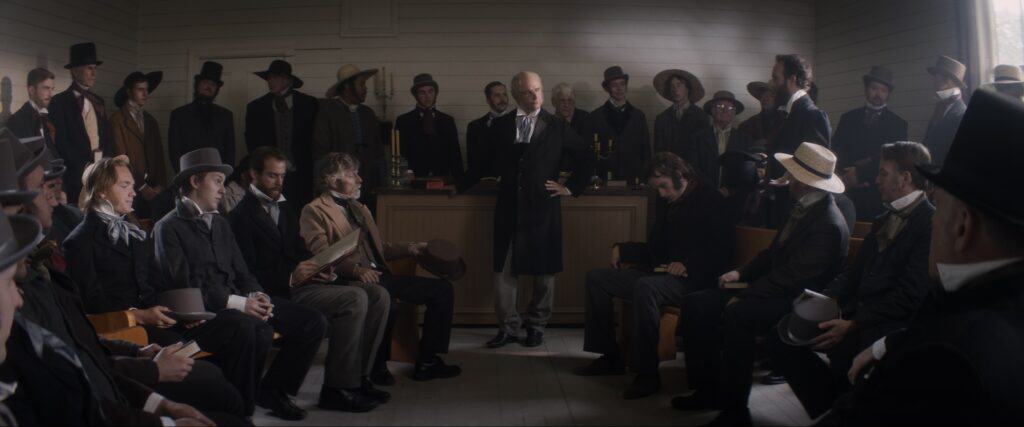
The Millerite Movement
The Millerite Movement began in 1831 after William Miller extensively studied biblical prophecies and concluded that Jesus would be returning soon.1 Miller had spent many years agonizing over whether to share what he’d learned. In 1831, he finally decided to do so when he received an unprompted invitation to speak.
The message that Jesus would return in 1843 or 1844 spread quickly, leading several thousands of people to recommit their lives to Christ and await the event.
But what was William Miller really like? How accurate is The Hopeful’s portrayal of him and the movement he inspired?
Got questions? Want to learn more? We’d love to hear from you.
Who was William Miller? Did he almost die in battle?
William Miller was a farmer in Low Hampton, New York, who became a captain in the US Army during the War of 1812. The movie shows a flashback of him during the Battle of Plattsburgh, as gunshots ring out around him and bodies lay everywhere. The battle was a miraculous victory for the Americans against overwhelming odds.2 Miller barely survived it.
Before the war, Miller had been a deist—someone who saw God as a distant deity with little, if any, personal involvement with human beings.3
But the Battle of Plattsburg changed everything for him.
During the battle, a shell exploded just a couple feet away from him. He should’ve been killed. This—and the apparently miraculous victory—made him wonder if God was indeed personally interested in humanity.4 One scene in the film shows Miller at a bar, expressing these questions to his friends—who laugh at him.
But Miller takes it as a challenge and begins studying the Bible for himself.
What prophecy in Daniel was Miller studying? Why did he believe it predicted the time of Jesus’ Second Coming?
The Hopeful shows Miller studying the prophecies of Daniel 8, specifically the 2,300-day prophecy in verses 13-14:
Then I heard a holy one speaking; and another holy one said to that certain one who was speaking,
NKJV
‘How long will the vision be, concerning the daily sacrifices and the transgression of desolation, the giving of both the sanctuary and the host to be trampled underfoot?’
And he said to me, ‘For two thousand three hundred days; then the sanctuary shall be cleansed’
Though we only get a small snippet of Miller’s study, in reality, he spent years studying the whole Bible along with this prophecy, seeking to understand what Scripture taught about the Second Coming.5
The context of Daniel 8 is the history of empires, noting one nation that would persecute God’s people. Verse 14 provided the timing for justice for those who were persecuted.
Based on the popular understanding of Miller’s time, he believed the “sanctuary” mentioned in those verses symbolized the earth. Thus, he assumed that the sanctuary being “cleansed” at the end of the 2,300-day prophecy referred to the judgment and the cleansing of the earth by fire at the time of Jesus’ Second Coming.
But how did he come to believe this would happen in his lifetime?
Miller used the Bible’s day-for-year principle, which teaches that one prophetic day is equivalent to a literal year. This principle is based on passages in the Bible like Ezekiel 4:5-6 and Numbers 14:34. Miller wasn’t the first to apply it—scholars before him, like Martin Luther and Isaac Newton, had also used it in their study.
That meant, then, that the prophecy would be 2,300 years long.
And the starting point for the prophecy?
He studied Daniel 9:24-27, a parallel prophecy to Daniel 8:14, and found the starting date to be the decree to restore and rebuild Jerusalem—a decree issued in 457 BC.6
Calculating 2,300 years from 457 BC brought him to 1843.
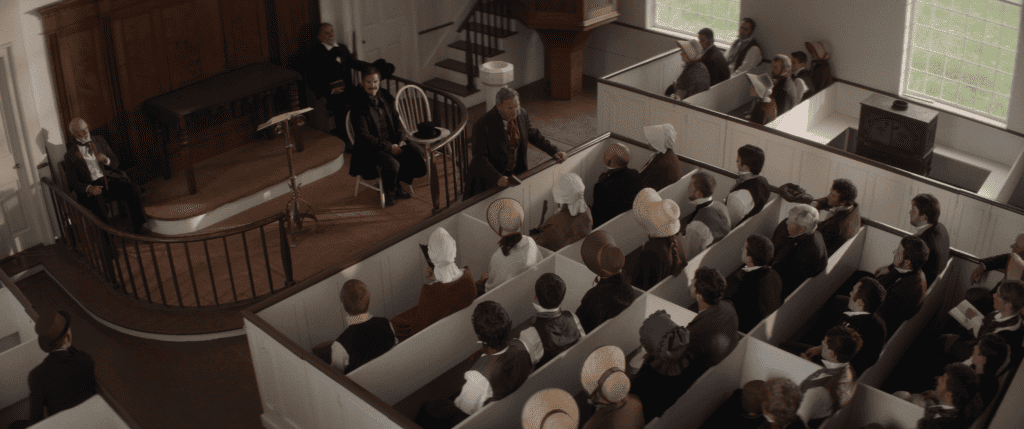
When did Miller begin sharing his findings in the Bible?
Though Miller came to his conclusions as early as 1818, it took him many years to share what he had learned. He continued to study out objections and questions for several years, fearful of misleading anyone.7
But those close to Miller—his family, friends, neighbors, local church leaders—knew about his studies and many were supportive. Even so, he struggled with the idea of preaching this message.
In 1831, the conviction came to him: “Go and tell the world of their danger.”8
Miller continued to fight against it, telling God: “I can’t go, Lord.”
But at last, he vowed to God, “If I should have an invitation to speak publicly in any place, I will go and tell them what I find in the Bible about the Lord’s coming.”9
Not long after making this promise, Miller had a knock at his door. It was a young man, the son of a Mr. Guilford, and he said that his father needed to see Mr. Miller.
And the matter that Mr. Guilford wanted to talk about? He invited William Miller to come and speak about the Lord’s coming at his church because they didn’t have a preacher lined up for the next day.9
Miller stormed out the door to a grove of trees where he wrestled with God about this calling. How could God have answered his prayer so quickly? Now, he had no choice but to preach.
Soon, more speaking engagements came in.
While preaching in Exeter, New Hampshire, sometime in 1839 or 1840, Miller met Joshua V. Himes, a pastor in the Christian Connection movement. Himes was a fiery character and master publicist who invited Miller to speak at his chapel in Boston. It was Miller’s first time speaking in a large city, and the room filled up so that they had to turn people away.10
Impressed with Miller’s message, Himes decided to invest himself in the movement and work together with Miller.11 He helped pave the way for many of Miller’s speaking engagements, including one held in Portland, Maine. It was there that the Harmon family, including Ellen, heard Miller for the first time and came to believe in the Millerite teachings.12
Himes also began to put the Millerite message in print, which gave rise to a whole series of Millerite periodicals.
Did some Christian churches condemn Miller’s teachings?
People from many different denominations heard William Miller preach and became convinced of Jesus’ soon coming: Baptists, Methodists, Congregationalists, Episcopalians, and more. Unfortunately, though, many church leaders disagreed with Miller’s teachings and told their congregations not to listen to him.
During Miller’s time, the common belief in churches was postmillennialism13 —that 1,000 years of peace would take place before Jesus’ return to earth, and would be the triumph of Christian civilization). So the idea that the Second Coming could be near felt extreme, even heretical.
Though the Millerites hadn’t planned to separate from their churches, many were no longer welcome after accepting Millers teachings.14 And as depicted in The Hopeful, such was the case with the Harmon family, whose memberships were removed from their local Methodist Church.
Did Miller really believe Jesus would return on October 22, 1844?
Yes, Miller did come to believe Jesus would return on October 22nd, 1844—but he wasn’t the one who set the date. One of his followers formally proposed it.
Miller had believed that Jesus would come sometime between March 1843 and March 1844.15 But Adventist historian George Knight emphasizes:
Miller set no specific date. He only indicated that Christ would come between March 21, 1843, and March 21, 1844. … Miller had not even wanted to set a year for the return of Christ. He was quite happy with the phrase ‘about the year 1843.’ As he put it, ‘the day and hour is not revealed, but the times are.’16
When March came and went in 1844, people began to wonder whether Jesus would actually return. Morale dipped.
But it soon rose again with the message of Samuel Snow at a camp meeting in Exeter, Maine. The movie shows Joseph Bates being interrupted so that Snow could share his findings.
Snow believed that the Jewish feasts had pointed to events of Jesus’ first coming and would do the same for the second coming. He tied the Day of Atonement (a ceremony of cleansing from sin) with the Second Coming of Christ (what Millerites believed to be the cleansing of the sanctuary). The Jewish Day of Atonement always occurred on the tenth day of the seventh month in the Jewish calendar. For the modern Western calendar, this day fell on October 22nd in 1844.17
Excitement and anticipation picked up again with this message.
However, Miller and Himes were skeptical. Miller began studying it, though, and by October, concluded it was correct.18
The message began to pick up speed as people put all their time and energy into spreading it. Many Millerites sold their farms and closed their businesses, giving their money to the cause. After all, if Jesus was coming soon, their earthly belongings didn’t matter anymore!
Excitement was building—but the Millerites were in for a bitter disappointment.
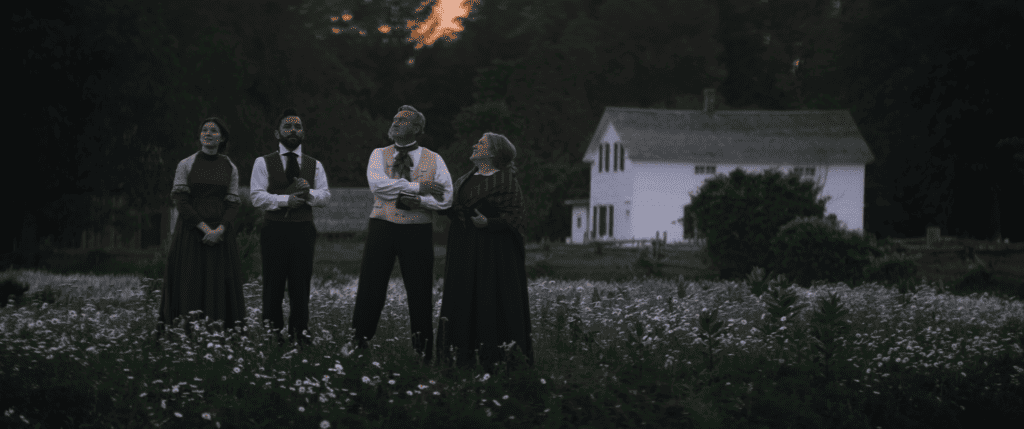
The Great Disappointment
The Hopeful shows Millerite believers waiting together for the coming of Jesus on October 22, 1844. William Miller, Joseph Bates, and all those who had poured their lives into spreading the news of Jesus’ return were sure that He would appear at any moment.
The idea of finally encountering their Savior filled their hearts with hope. They had no fear, because they loved Jesus and were eager to meet Him.
But midnight struck, and Jesus did not appear.
For many, hopeful expectancy turned into profound sorrow and many questions, as reflected in the scene of Ellen Harmon sobbing.
The Millerites who had invested much of their livelihood into the cause and were left wondering how they would make ends meet. The movie shows Joseph Bates and his wife having barely enough money to buy flour because they had put all their savings into supporting the Millerite Movement.
Yet all hope was not lost. A group of believers in Jesus would find the hope and courage to keep moving forward in their spiritual journey.
What did William Miller, Joshua V. Himes, and other Millerites do after the Great Disappointment?
After the Great Disappointment, many people were disillusioned and left the Millerite Movement. Others sought to make sense of what happened and what they’d found in the Bible.
William Miller, Joshua V. Himes, and several others simply concluded that the date had been incorrect but that Jesus would still return.
William Miller willingly acknowledged his mistake. In fact, Joshua V. Himes published “William Miller’s Apology and Defense,” in which Miller wrote:
We expected the personal coming of Christ at that time; and now to contend that we were not mistaken, is dishonest. We should never be ashamed to frankly confess all our errors.”19
By the time of the Great Disappointment, Miller was already older and struggling with his health, so he didn’t continue to preach in public.20 However, his efforts still inspired many believers to continue to look forward to Jesus’ return. And up until his death in 1849, Miller held onto this hope of a literal, premillennial Second Coming.
What actually happened on October 22, 1844?
When Jesus didn’t return on October 22, 1844, the Millerites were perplexed. They were so sure God had been leading them. What had they missed in their Bible study?
As they studied, they realized that William Miller’s calculations of the 2,300-day prophecy were accurate, but he had been mistaken about the event that occurred.
Rather than Jesus returning to earth on October 22, 1844, He had begun cleansing the heavenly sanctuary, or temple, as described in Hebrews 9:23-28.
This cleansing of the heavenly sanctuary paralleled the Old Testament feast called the Day of Atonement (Leviticus 17; 23:26-32). It was a time of sacrifice, confession, and cleansing of sin for the ancient Israelites and it represented the judgment that would occur in heaven—a cleansing of the records—right before Jesus returned to earth (Daniel 7:9-10).
These Bible believers discovered more and more fascinating and applicable principles in the Bible and eventually formed the Seventh-day Adventist Church. In this part of the movie, two key figures take center stage. We’ll look at their lives in more detail next.
Want to know more about the Adventist Church or the events portrayed in The Hopeful?
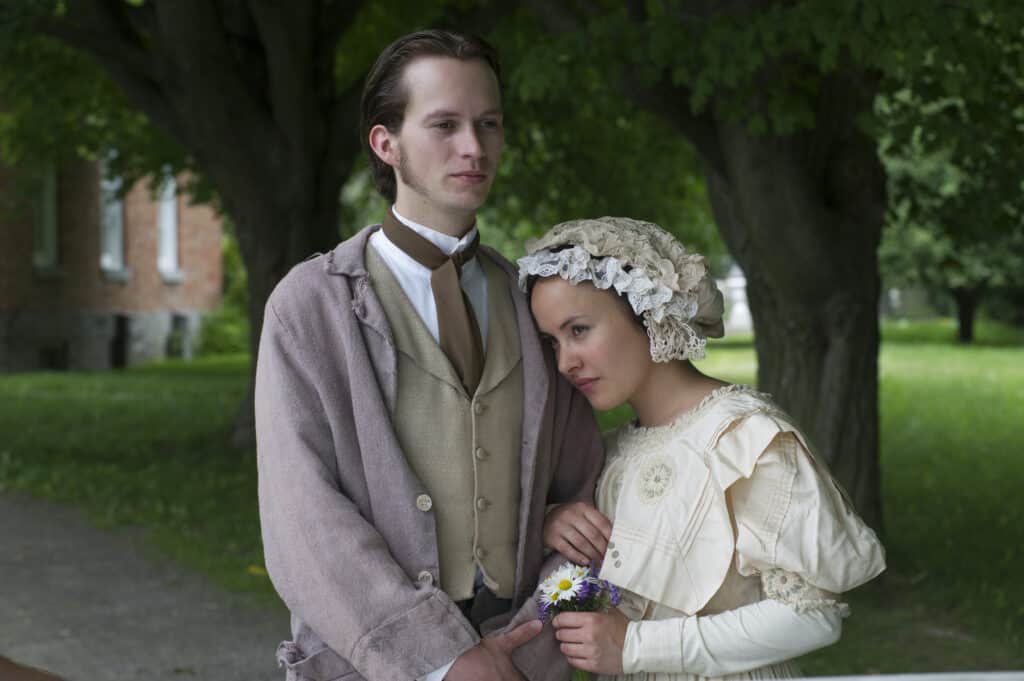
James and Ellen White
James and Ellen White were both young during the time of the Millerite Movement. James was barely out of his teens and Ellen was a few years younger. But even in their youth, they did all they could to help support the movement.
Ellen heard William Miller preach in 1842.21 His words were an encouragement to her. She often dealt with anxiety and fear about hellfire and God’s wrath, which made her wonder whether God truly accepted her. Over time though, she came to understand the love of God for her and waited with excitement for Jesus’ return.22
She, too, grieved deeply when Jesus didn’t return.
But soon after, she received a message of hope.
What was Ellen White’s vision all about?
The Hopeful shows a short clip of Ellen Harmon receiving a vision while gathered with some women to pray, shortly after the Great Disappointment. Indeed, she had a vision in December of 1844. In her words,
The Holy Ghost fell upon me, and I seemed to be rising higher and higher, far above the dark world. I turned to look for the Advent people in the world, but could not find them, when a voice said to me, ‘Look again, and look a little higher.’23
In the vision, she saw the Millerites, referred to as the “Advent people,” traveling on a narrow path toward heaven. They had a bright light behind them, and their eyes were on Jesus, who was leading them. She was told that the bright light represented the message of “the Midnight Cry”—the preaching of Jesus’ coming in 1844.
Some, though, took their eyes off Jesus and “denied the light behind them,” falling off the path.23
The vision concluded with Jesus appearing on a great white cloud, then the Advent people entering heaven and the New Jerusalem.
This vision gave the disappointed Millerites hope that God was still guiding and leading them, despite the considerable discouragement they’d gone through. After this, Ellen received hundreds of more visions. Adventists believe these visions were from the Holy Spirit and that Ellen White demonstrated the gift of prophecy (Romans 12:6; 1 Corinthians 12:10) because her visions and messages were consistent with the Bible and always pointed people to Jesus.
What were Ellen White’s health struggles?
Ellen White struggled with frail health throughout much of her younger years, as the movie emphasizes. These struggles stemmed from an incident when she was nine years old: A girl at school threw a rock at her, hitting her right in the face.
It wasn’t until several years later that she became involved in the Advent Movement and received her first vision, so her visions were not a result of seizures or hallucinations. But the accident left her weak and frail through the rest of her childhood and early adulthood, though, so she was unable to receive more than a third-grade education.
Considering these facts, what Ellen White accomplished in her lifetime—traveling, speaking, and writing nearly 50 books and over 5,000 articles—is incredible.

Did Ellen’s sister turn against her?
The Hopeful portrays Ellen Harmon’s twin sister, Elizabeth, as struggling with the teachings of the Millerite Movement and later turning against Ellen because of her visions.
In reality, Elizabeth and Ellen worked together to spread the message of the Millerite Movement up until the time of the Great Disappointment. They joined with their older sister, Sarah, to earn money so they could buy books and tracts to share about the Second Coming.24
Even after the Great Disappointment, Elizabeth would sometimes travel with Ellen to her speaking engagements.
In 1849, Elizabeth married Reuben Bangs and settled on a farm in Gorham, Maine. Neither she nor her husband became Seventh-day Adventists, and in the appendix of some of Ellen White’s writings, a short biography of Elizabeth shares the following:
For reasons that are not altogether clear, Elizabeth seems to have lost much of her Christian faith in the years that followed, though she strongly denied being an ‘infidel.’25
Ellen and Elizabeth weren’t in contact much during these early years of their marriages.26 However, there isn’t any clear evidence that Elizabeth would’ve been hostile toward Ellen.
How did Ellen and James meet?
James first saw Ellen in Portland, Maine, in 1843 when she was sharing her testimony of how Christ was working in her life. The young man took notice, though the two didn’t officially meet until after the Great Disappointment in Orrington, Maine.
They were both traveling and speaking to Advent believers, and James offered to travel with Ellen and Sarah to provide them with protection and help.27
James and Ellen enjoyed each other’s company and were devoted to serving God. Initially, they had no plans to marry. After all, they believed that Jesus would be returning soon!28 However, rumors began to spread about them, and the two decided it would be best to get married or no longer travel together.29
With James and Ellen spending so much time together and having the opportunity to observe one another, love had indeed blossomed between them, and they decided to tie the knot. A justice of the peace married them on August 30, 1846.
They served God together and cared for one another until James’s death in 1881.
How many children did the Whites have? How did two of them die?
The Whites had four children. Their oldest, Henry Nichols (1847-1863), died at age 16 from pneumonia.
The following two were James Edson (1849-1928) and William Clarence (1854-1937), who both lived into adulthood.
The youngest, John Herbert, was born in 1860 and died at only three months old from an infection.30 The Hopeful depicts his burial and the sorrow Ellen White experienced over losing her son.
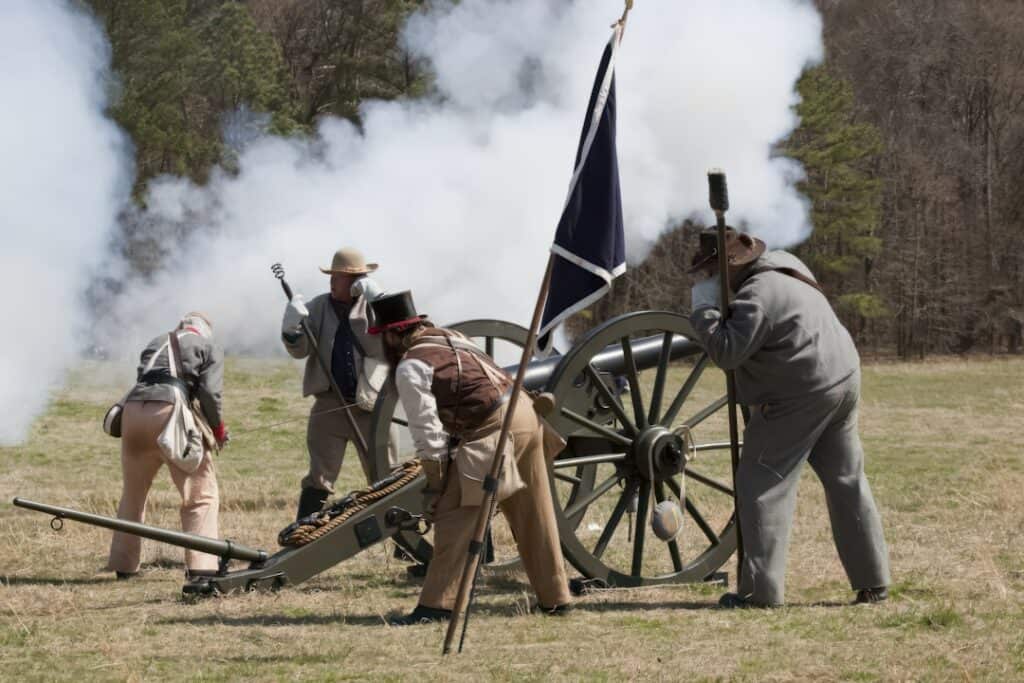
Did Ellen White really prophesy the Civil War?
Yes. On January 12, 1861, Ellen White saw a vision of the coming Civil War in Parkville, Michigan.
The timing of this vision is significant.
In December 1860, South Carolina seceded from the union. At that time, it didn’t seem very serious, though, and people didn’t think a war would occur.
But her vision suggested otherwise:
Men are making light of the secession ordinance that has been passed by South Carolina. They have little idea of the trouble that is coming on our land. No one in this house has even dreamed of the trouble that is coming.31
She continued:
I have just been shown in vision that a number of States are going to join South Carolina in this secession, and a terrible war will be the result. In the vision I saw large armies raised by both the North and the South. I was shown the battle raging. I heard the booming of the cannon, and saw the dead and wounded falling on every side. I was then taken to hospitals, and saw the sufferings of the sick and wounded prisoners. I was taken in the vision to the homes of those who had lost sons, brothers, or husbands in the war. There was distress and mourning all over the land. There are those in this house who will lose sons in that war.32
The prophecy she received proved to be sadly accurate.
What was James White sick with? What happened to him after his stroke?
James White also struggled with poor health from a young age. At age three, he contracted an illness called “worm fever,” which impacted his eyesight for much of his childhood and prevented him from attending school until age 19.33
Even after that, though, his health was never ideal—especially since he tended to take on too much and overwork himself. As a result of the high amount of pressure he was under, he suffered his first major stroke in 1865 and had a total of five during his lifetime.
The Hopeful shows James White having his first stroke when he collapses at the dinner table.
Amazingly, he recovered from this stroke as he followed the principles of health Ellen had seen in vision back in 1863. These principles included a simple diet, water, fresh air, exercise, and a balance of work and rest.
During his recovery, James and Ellen spent some time at a health center in Dansville, NY, which promoted many of these principles of health. After their time there, Ellen White received a vision from God that Adventists should begin their own health center. The center, known as the Western Health Reform Institute, opened soon after, allowing Adventists to share these principles of health in conjunction with medical care and their faith in God.34
James White, though, never truly paced himself. He continued working for the Adventist Church but often overworked himself at the expense of his mental and physical well-being. He died after contracting malaria in 1881. He was only 60.
The beginning of Seventh-day Adventism
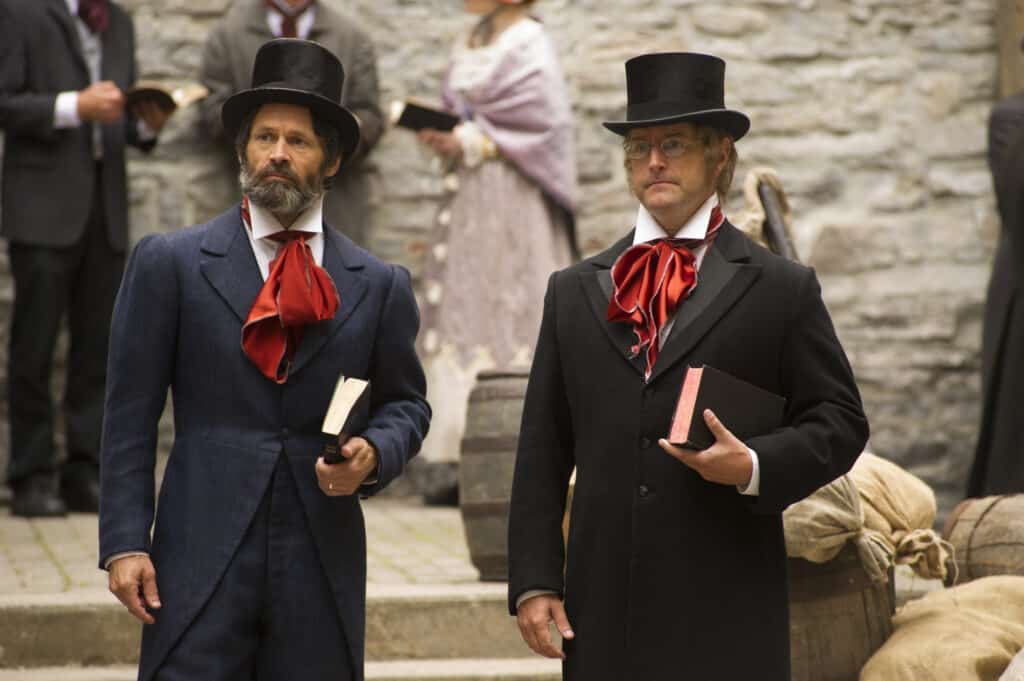
The Millerite Movement fizzled out after the Great Disappointment of October 22, 1844. Many Millerites even left their Christian faith completely. But a small group of believers just couldn’t give up. They’d come to know the prophecies Miller preached about so well, and the message of Jesus’ return had brought so much hope and changed the lives of so many.
So, they turned to their Bibles and continued to look for answers. Ellen White’s visions also encouraged them, though they never held her teachings on the same level as the Bible. Instead, her visions spurred them to deeper study.35
One of their first discoveries in Scripture was the seventh-day Sabbath. And this wouldn’t be the only discovery.
In 1848, these Sabbatarian believers, as they were called, gathered together for “Bible conferences.” The purpose of these meetings was to fast, pray, and study the Bible. With the guidance of the Holy Spirit, they dug deeper into many truths during this time of study. Truths such as:
- The imminent Second Coming of Jesus
- Christ’s ministry in the heavenly sanctuary
- Prophecies in Revelation
- What happens after death
During this time, however, Ellen White struggled. She described her mind as “locked,” unable to understand what the others were studying. But when they came to a roadblock and felt they couldn’t do anything else, she would receive a vision to help clarify what they were studying, or to bring other parts of Scripture to attention.36
In this way, Ellen White’s visions assisted the early Adventist believers in their study rather than dictating what they should believe. She always pointed them back to the Bible and its truths.
The Sabbath truth, in fact, was something that Ellen White herself didn’t believe at first. She learned about it from Joseph Bates, who had read about it through the writings of another Millerite believer. Let’s peek into that story.
How did the Millerites learn about the Sabbath?
The Millerites learned about the Sabbath from the Seventh-day Baptists, specifically Rachel Preston Oaks. The Hopeful recounts the humorous story of outspoken Rachel Oaks confronting the itinerant preacher Frederick Wheeler after hearing his sermon one Sunday:
“While you were speaking, Elder Wheeler, I could scarcely contain myself. You said that we must observe all of the Ten Commandments, and yet you yourself constantly break one of them!”37
Poor Elder Wheeler was no doubt taken aback: “Why, Sister Oaks, whatever do you mean?”37
“I mean that the fourth commandment says, ‘The seventh day is the Sabbath of the Lord thy God,’ but you keep the first day. You observe the pope’s Sunday instead of the Lord’s Sabbath!”37
Wheeler had to admit that she was right. As a result, he became the first Sabbath-keeping minister in North America and influenced a Baptist minister named Thomas Preble to become the second.
Preble decided to write a pamphlet about the Sabbath truth, which eventually landed in the hands of Millerite leader Joseph Bates. He began to keep the Sabbath and share it with other Millerites, including Ellen and James White.38
Soon, more and more ex-Millerite Adventists began to study the Bible and see the beautiful truth of Sabbath rest. This would also become an essential part of their name.
When did the Seventh-day Adventist Church get its name?
For many years after 1844, the Advent believers remained a growing movement with little structure or organization. As time passed, they became more involved in publishing work and needed to establish their first printing company. It was time for “the child” to have a name.
So in 1860, 25 delegates gathered together in Battle Creek, Michigan, to discuss the naming of this movement. There, they settled on “Seventh-day Adventist”—“seventh day” to refer to Adventists’ observance of the biblical Sabbath; and “Adventist” from the term “advent,” which refers to Jesus’ return.39
Two years later, the General Conference of Seventh-day Adventists was established to help bring unity among the scattered believers and provide support for the ministers.
The movement was ready for growth. And in the past 160 years, it has indeed grown. More on that next.

The rest of the story: Adventism then and now
The Hopeful comes to a close as John N. Andrews and his two children continue sailing to Switzerland as the first Seventh-day Adventist overseas missionaries. And this was just the beginning of missionary work and the church’s growth worldwide. The desire of Adventists has always been to share the hope in Jesus and the enlightenment of Scripture with the whole world.
In the early years of the church, Ellen White herself traveled to Europe and Australia. And in the late 19th century, other believers went as missionaries to Australia and Africa, among other locations.
Since then, Adventism has become a worldwide Christian denomination and movement with 22.78 million church members across the globe. Headquartered in Silver Spring, Maryland, the Church has 175,144 congregations (both churches and smaller groups) that meet together.
A member of the Seventh-day Adventist Church can go nearly anywhere and find a church “family” in this global community.
The Adventist Church is also significantly active in:
- Publishing
- Humanitarian aid
- Education
- Healthcare
Today, the Adventist Church operates 57 publishing houses, including the Pacific Press Publishing Association in Nampa, Idaho. Not to mention the nearly 3,000 radio and TV channels worldwide!
Extending the love of Jesus to people who are suffering or hurting is also part of the Adventist mission. The Adventist Development and Relief Agency (ADRA for short) is a humanitarian organization that helps people who have experienced natural disasters or who live in underdeveloped countries.
Healthcare is another major way that Adventists extend the love and healing ministry of Jesus.
As The Hopeful brings out, health has played an important role in the Adventist Church’s history, starting all the way back in 1866 with the first Adventist health center.
Since then, these efforts have developed the largest Protestant health network in the world, with 232 hospitals and sanitariums (health centers) and 1,557 clinics. Think Loma Linda University Medical Center in California or the AdventHealth hospital network, based in Orlando.
Then, there’s the Adventist educational system of over 9,000 schools, including 146 post-secondary. Two of the most well-known universities are Andrews University in Berrien Springs, Michigan, and Loma Linda University in Loma Linda, California.
A growing movement with an unchanging desire
Going back to the 1840s, to the story told by The Hopeful, there was no Seventh-day Adventist Church. No official organization. No name, even. It was just a small group of people seeking to understand the Bible and live their lives for Jesus.
Yet, from the humble beginnings shown in the movie, the Seventh-day Adventist Church has rapidly grown into a worldwide organization with schools, hospitals, relief organizations, and more.
This is a testament to what God can do with even a small group of willing believers. The humble, ordinary people of the Advent Movement simply allowed God to lead, guide, and grow their community of faith.
But all this worldwide growth hasn’t changed the desire of Adventists to cultivate a personal relationship with Jesus and be prepared for His return. That is what sparked the entire movement—and continues to carry it forward.
Connect with our team of ministry specialists! Ask a question, request information or resources, or share a prayer request.
- “William Miller,” Encyclopedia Britannica. [↩]
- “Battle of Lake Champlain,” Naval History and Heritage Command. [↩]
- Loughborough, J. N., The Great Second Advent Movement, Adventist Pioneer Library, 2016, p. 101. [↩]
- Maxwell, C. Mervyn, Tell It to the World, Pacific Press, 1977, p. 11. [↩]
- Maxwell, p. 13-14. [↩]
- Shea, William, “Supplementary Evidence in Support of 457 B.C. as the Starting Date for the 2300 Day-Years of Daniel 8:14,” Journal of the Adventist Theological Society, vol. 12, no. 1. [↩]
- Hale and Bliss, Sylvester, Memoirs of William Miller, J.V. Himes, 1853., p. 81. [↩]
- Hale and Bliss, p. 92. [↩]
- Hale and Bliss, pp. 92-98. [↩] [↩]
- Maxwell, p. 16. [↩]
- Hale and Bliss, p. 104. [↩]
- Maxwell, p. 17. [↩]
- Maxwell, p. 24. [↩]
- Loughborough, p. 145. [↩]
- Maxwell, p. 26. [↩]
- Knight, George, William Miller and the Rise of Adventism, Pacific Press, 2010, p. 106. [↩]
- Knight, p. 158. [↩]
- Maxwell, p. 32. [↩]
- Miller, William, “William Miller’s Apology and Defense,” p. 28. [↩]
- White, Ellen, Early Writings, Review and Herald, 1882, p. 401. [↩]
- White, Ellen, Life Sketches of Ellen G. White, Pacific Press, 1915, p. 29. [↩]
- White, Life Sketches, pp. 29-31, 39-40. [↩]
- White, Life Sketches, , p. 64. [↩] [↩]
- White, Life Sketches, p. 47. [↩]
- White, Ellen, The Ellen G. White Letters and Manuscripts, vol. 1, Review and Herald, 2014, p. 786. [↩]
- White, Letters and Manuscripts, vol. 1, p. 787. [↩]
- Maxwell, p. 60. [↩]
- Maxwell, p. 200. [↩]
- Steinweg, Marlene, “Her Husband’s Crown,” Lest We Forget, vol. 5, no. 3. [↩]
- Douglas, Herbert, Messenger of the Lord, Pacific Press, 1998, p. 48. [↩]
- White, Arthur, Ellen G. White: The Early Years 1827-1862, vol. 1, Review and Herald, 1983, p. 463. [↩]
- White, The Early Years, vol. 1, p. 463. [↩]
- White, James, Life Incidents, Seventh-day Adventist Publishing Association, 1868, p. 12. [↩]
- Douglass, pp. 301-305. [↩]
- Douglass, pp. 134-135. [↩]
- White, Ellen, Selected Messages, book 1, Review and Herald, 1958, pp. 206-207. [↩]
- Maxwell, pp. 67-68. [↩] [↩] [↩]
- Maxwell, p. 74. [↩]
- Loughborough, p. 291. [↩]
